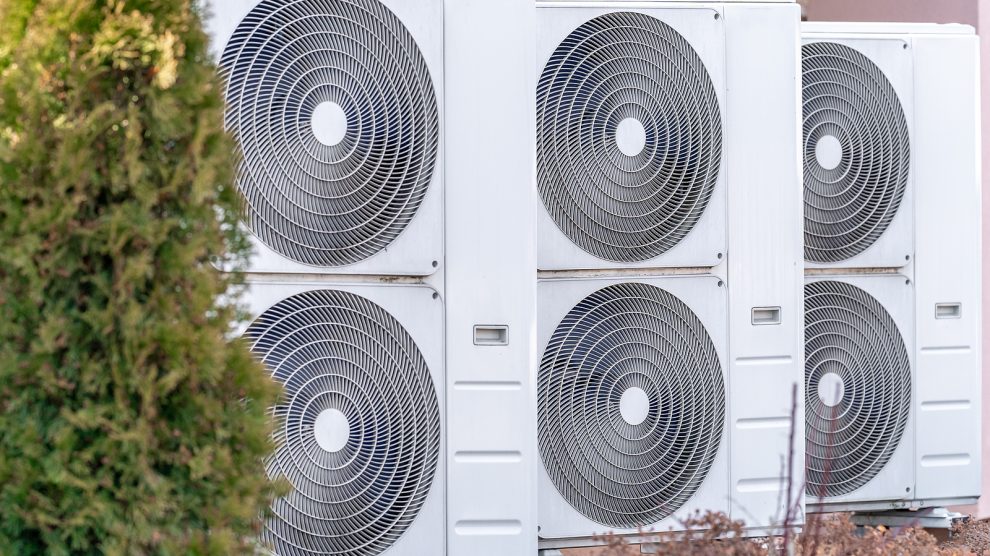Two major manufacturers of heat pumps are investing large sums in Poland, with the country set become a key location as firms race to meet surging demand for the energy-efficient devices.
Over the past two weeks Poland, which saw Europe’s biggest increase in heat pump sales in 2022, has become the preferred location for heat pump manufacturers looking to open new plants to meet surging demand for the energy-efficient devices.
Heat pumps offer an energy-efficient alternative to traditional boilers and air conditioners and are suitable for all climates, transferring rather than generating heat. During the winter, heat pumps move heat from the cool outdoors into warm homes, while during the summer they can shift heat from homes into the outdoors, much like an air conditioner.
- Inflation, a new East-West divide
- Latvia cancels Skulte LNG project, but the Baltic reliance on gas persists
- Central Asia and Europe must work together to tackle the consequences of climate change
On April 7, Daikin, a Japanese manufacturer, said that it had broken ground on a 300 million euros project to construct a heat pump factory in Ksawerów, near Łódź, with completion scheduled for 2024.
“The decision to establish this entirely new factory in Poland shows Daikin is responding firmly to the accelerating demand in Europe. Poland is a country with a large number of skilled workers and the new factory will employ 1,000 people by 2025,” says Hiromitsu Iwasaki, vice president of Daikin Europe.
As the Japanese firm’s new production base in Europe, the new factory in Poland will serve to augment current production in Germany, Belgium, and Czechia with production capacity quadrupling by 2025.
In a further boost for Polish manufacturing, Daikin’s investment was matched this week by German engineering giant Bosch, which announced that it intends to spend 255 million euros on a new heat pump manufacturing site at Dobromierz in Lower Silesia, some 70 kilometers from Wrocław.
“Heat pump technology is a European success story that we want to continue,” says Christian Fischer, the deputy chairman of the Bosch board of management, responsible for the company’s Energy and Building Technology and Consumer Goods business sectors.
Construction work on the new plant is set to start in 2024, with production scheduled to begin at the end of 2025. Some 500 new jobs are to be created.
“In the European Union, we expect growth in this very dynamic environment to be exceptionally high, and have set ourselves the target of growing significantly faster than the market. Together with our existing plants in Europe, the new plant in Poland will helps us achieve these growth targets,” adds Jan Brockmann, the CEO of the Bosch Home Comfort Group.

Keeping pace with demand
Demand for heat pumps in Europe climbed higher than ever in 2022, with growth of almost 38 per cent, bringing the total number of connected heat and hot water pumps in Europe to around 20 million, according to data from European Heat Pump Association (EHPA), an industry body.
Heat pumps now provide heating to around 16 per cent of Europe’s residential and commercial buildings, and the EHPA believes that sales will continue to increase – as long as producers can keep pace. The new facilities in Poland should help to ensure that they do.
“Still many in Europe do not yet have a heat pump for reasons ranging from the sector operating at capacity to upfront costs to lack of clear information,” says the EHPA’s secretary general Thomas Nowak. “We are working closely with a coalition of organisations and the European Commission to build an EU heat pump plan which addresses these crunch points.”
Heat pumps are normally three times more efficient than gas boilers, but as they use electricity to run, their cost-effectiveness is dependent on electricity prices.
Investment costs for heat pumps are also far higher than for fossil fuel-based heating devices. Several countries in emerging Europe, including Poland, Lithuania, Slovakia and Czechia, offer subsidies for the installation of heat pumps.
The EU has long hinted that it wants to implement a ban on gas boilers across the bloc in order to meet its target of reducing greenhouse gas emissions to at least 55 per cent below 1990 levels by 2030 (Fit for 55).
This is likely to be carried out in stages, beginning with a ban on their installation in new homes by 2029.
Unlike many news and information platforms, Emerging Europe is free to read, and always will be. There is no paywall here. We are independent, not affiliated with nor representing any political party or business organisation. We want the very best for emerging Europe, nothing more, nothing less. Your support will help us continue to spread the word about this amazing region.
You can contribute here. Thank you.



Add Comment